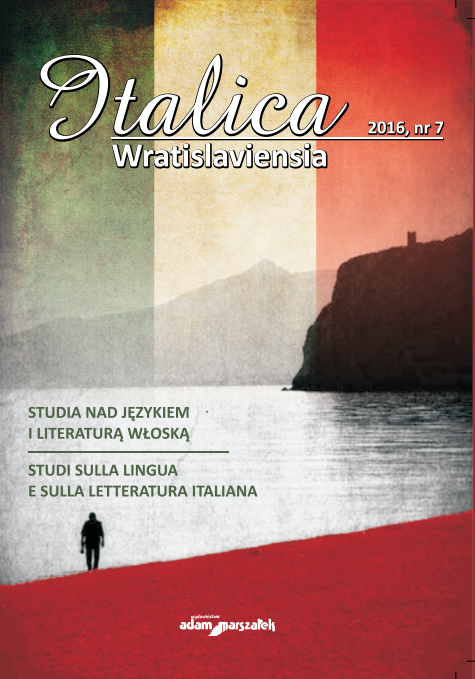Dyskurs przestrzeni – przestrzeń dyskursu. Obraz miasta w "Innej Wenecji" Predraga Matvejevicia
The Discourse of Space – the Space of Discourse. The Image of the City in "Druga Venecija (The Other Venice: Secrets of the City)" by Predrag Matvejević
Author(s): Katarzyna Majdzik PapićSubject(s): Language and Literature Studies, Studies of Literature
Published by: Wydawnictwo Adam Marszałek
Keywords: discourse; space; Matvejević; city; Venice
Summary/Abstract: The author of this article reconstructs the image of V enice depicted in the novel-essay Druga Venecija (The Other Venice: Secrets of the City) by Predrag Matvejević. The novel is characterised by multilingualism (loanwords from the I talian language and its dialects) and contributions from other arts (numerous illustrations, maps, photo reprints, etc.). The discursive mechanisms shaping the impression of space and the world that is represented, as well as the nonlinguistic (visual) ways of its reproduction, are analysed in the article.The narration of the novel is deprived of plot, as it is essayistic and dehistoricised. The book incorporates different genres, combining elements of the essay, travelogue novels, encyclopaediae, and portolan charts. It is characterised by minimalism and restrained language, which are distinguishing features of M atvejević’s workThe poetics of minimalism is reflected in the fragmentation of the plot, the selectivity of themes, and the simplicity of style. The writer concentrates on presenting the details, exploring unknown areas that are overlooked in other literary descriptions of V enice. The originality of M atvejević’s creative method is based on tracking down abandoned, non-obvious, and devastated places; the book, therefore, describes the passages of the city, referring random information and fragments of other stories and legends. Enumeration is the most frequent figure of speech used by the writer to describe phenomena in a synchronous and non-hierarchical way.The starting point for the considerations made in this article are the philosophical concepts of the relationship of semiotic systems and different types of art (both applied and fine) to the category of spatiality (Derrida, Rewers, Eco, Taine).
Journal: Italica Wratislaviensia
- Issue Year: 7/2016
- Issue No: 1
- Page Range: 105-121
- Page Count: 17
- Language: Polish

